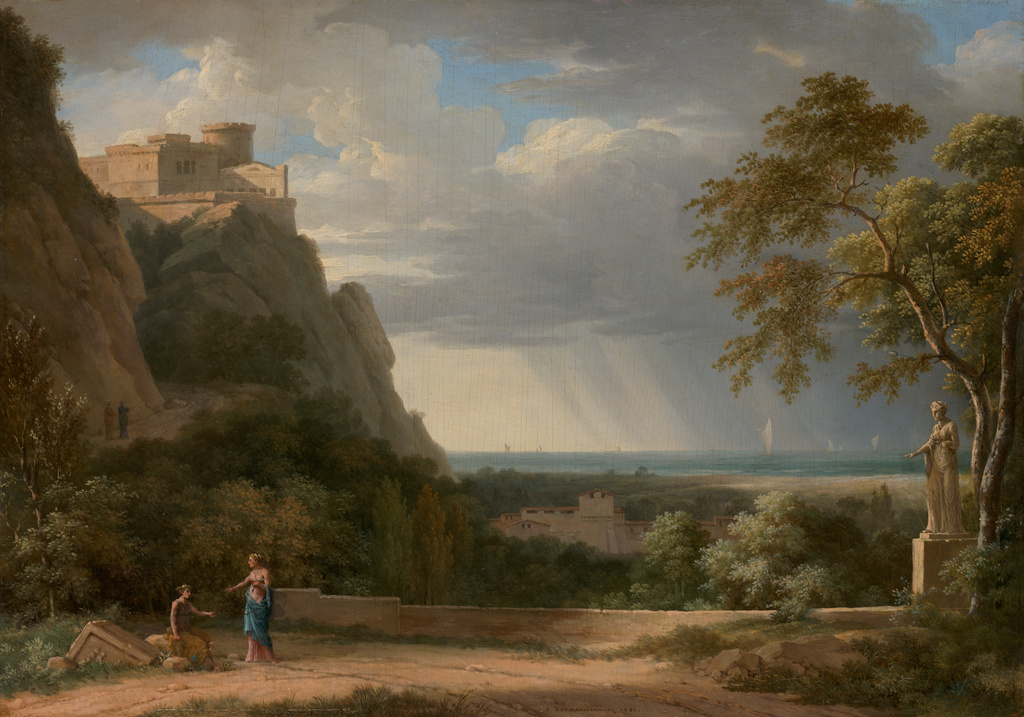Though small in scale, Classical Landscape with Figures and Sculpture contains all the elements prized in a painting by Valenciennes: a classical sense of serenity and harmony, the sensitive rendering of light and shadow, convincing atmospheric space, and a freshness of effect inspired by studies after nature. A rocky acropolis dominates the left side of the composition, balanced on the right by a gracefully lit tree and antique marble sculpture. The sculpture depicts a life-size woman in classical dress gesturing across the composition toward a “real-life” figure who mirrors her in stance and garb. A fantastic cluster of Roman architecture nestles in the woods at the center of the composition, beyond which lies a thin body of water. Sailboats move in and out of diagonal shafts of rain. The sky is filled with billowing clouds through which the sunlight casts patches of dark and light, both creating visual drama and integrating the composition. The soft, warm light and the precise, exquisite brushwork add to the poetic quality of this gemlike work. Painted on panel, it is in pristine condition.
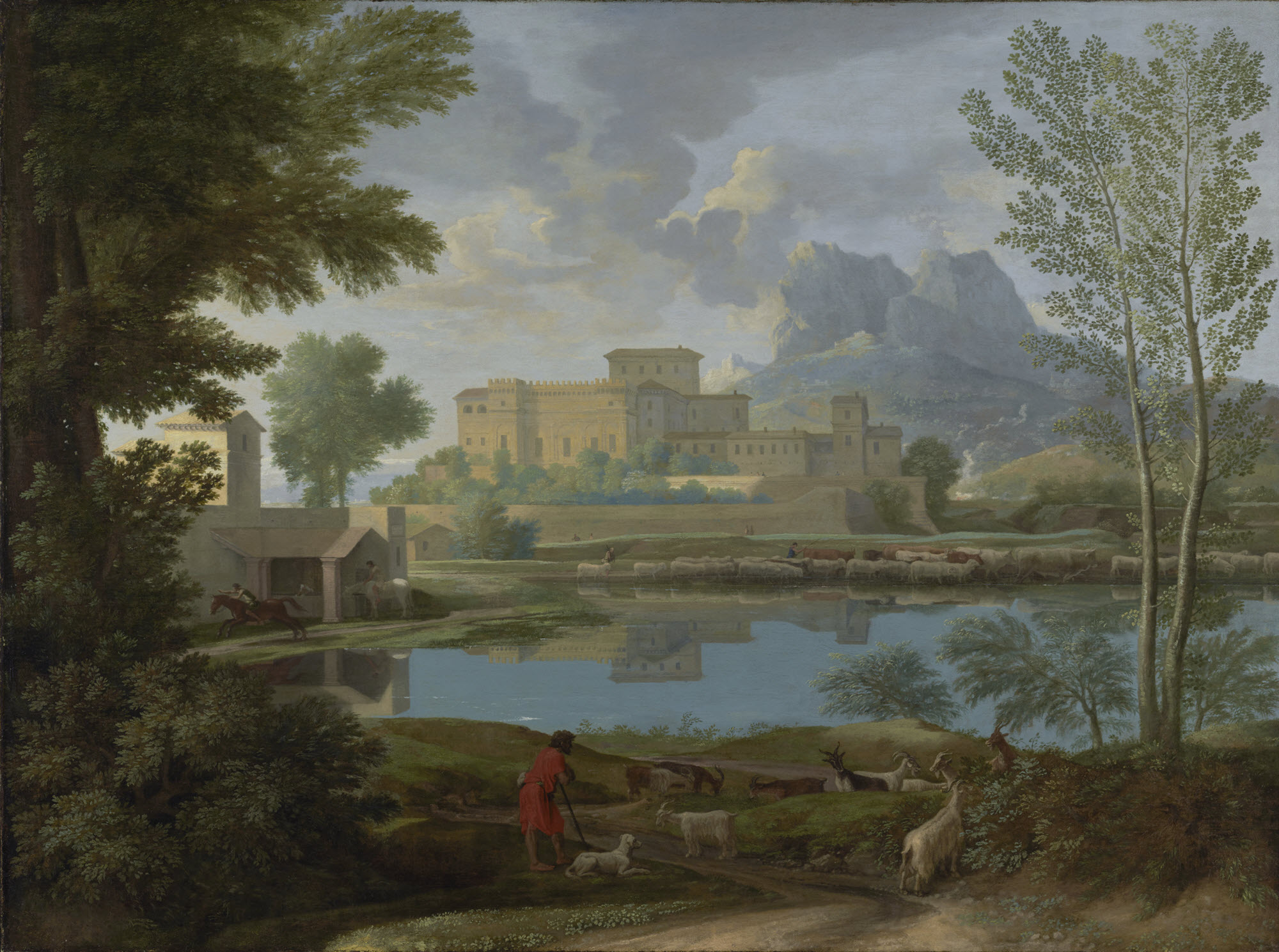
With the skill of a miniaturist, Valenciennes signed and dated the painting: 1788, the year after his debut at the Paris Salon and his acceptance as a member of the Académie Royale. This painting was exhibited at the Salon of 17891 and stands as a consummate example of the genre known as paysage historique, which Valenciennes legitimized, developed, and theorized through his painting practice, teaching, and publications. Established in the seventeenth century by Nicolas Poussin (1594–1665; fig. 1) and Claude Lorrain (1604–1682; fig. 2), paysages historiques were idealized, imaginary visions of the landscape of the ancient world, inspired by outdoor studies in the Roman campagna.
Valenciennes trained as a history painter in the studio of Gabriel-Francois Doyen (1726–1806) and studied perspective with the leading landscapist of the day, Claude-Joseph Vernet (1726–1789). In 1777, he traveled to Italy, remaining there until about 1784–85. In addition to studying Ancient, Renaissance, and Baroque art in Rome, Valenciennes spent time painting outdoors, en plein air, in the countryside surrounding the Ancient City as well as in other regions of central Italy (fig. 3). Valenciennes would argue for the practical importance of studying nature firsthand in his famous treatise of 1800, Élémens de perspective pratique à l’usage des artistes, suivis de réflexions et conseils à un élève sur la peinture et particulièrement sur le genre du paysage.
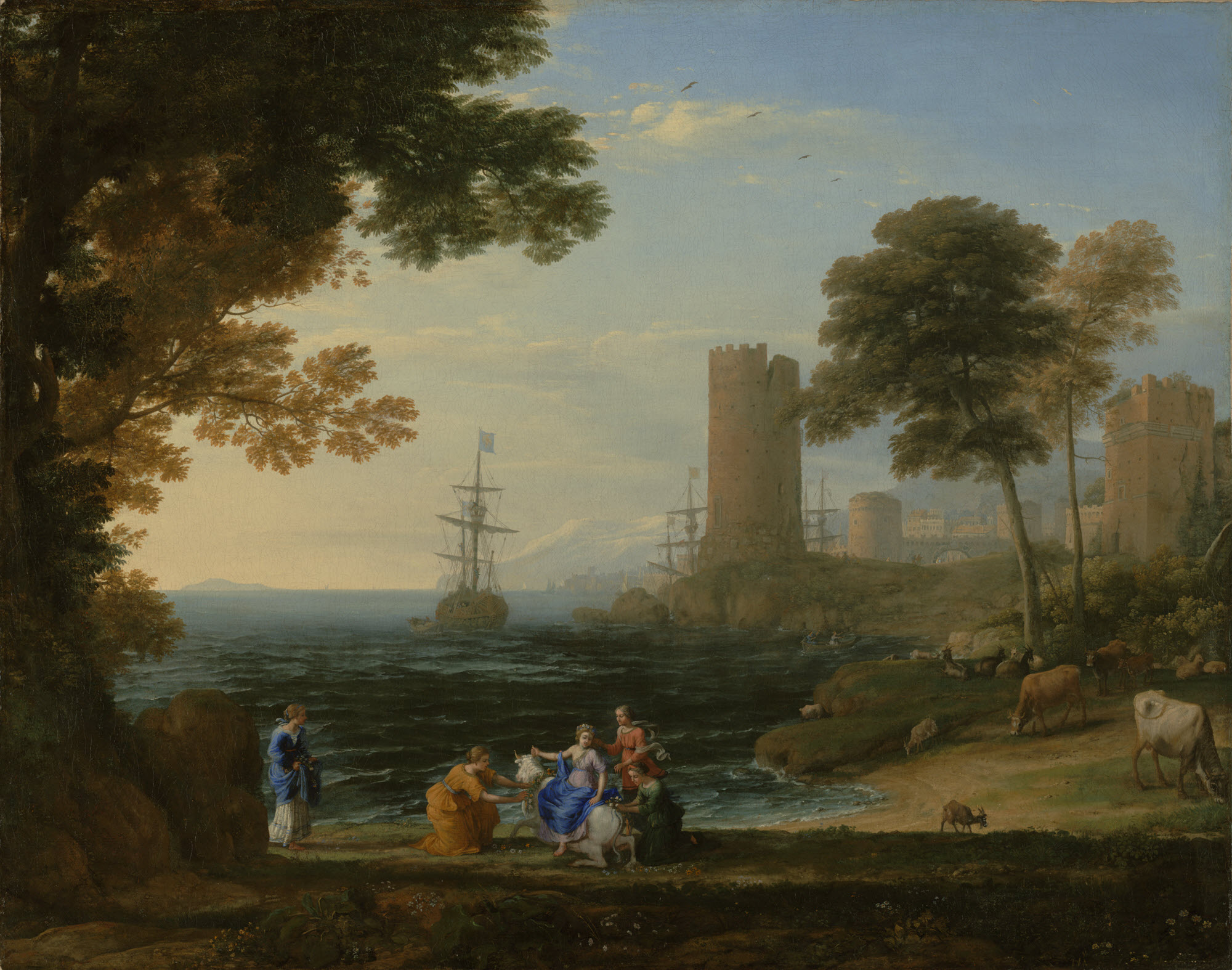
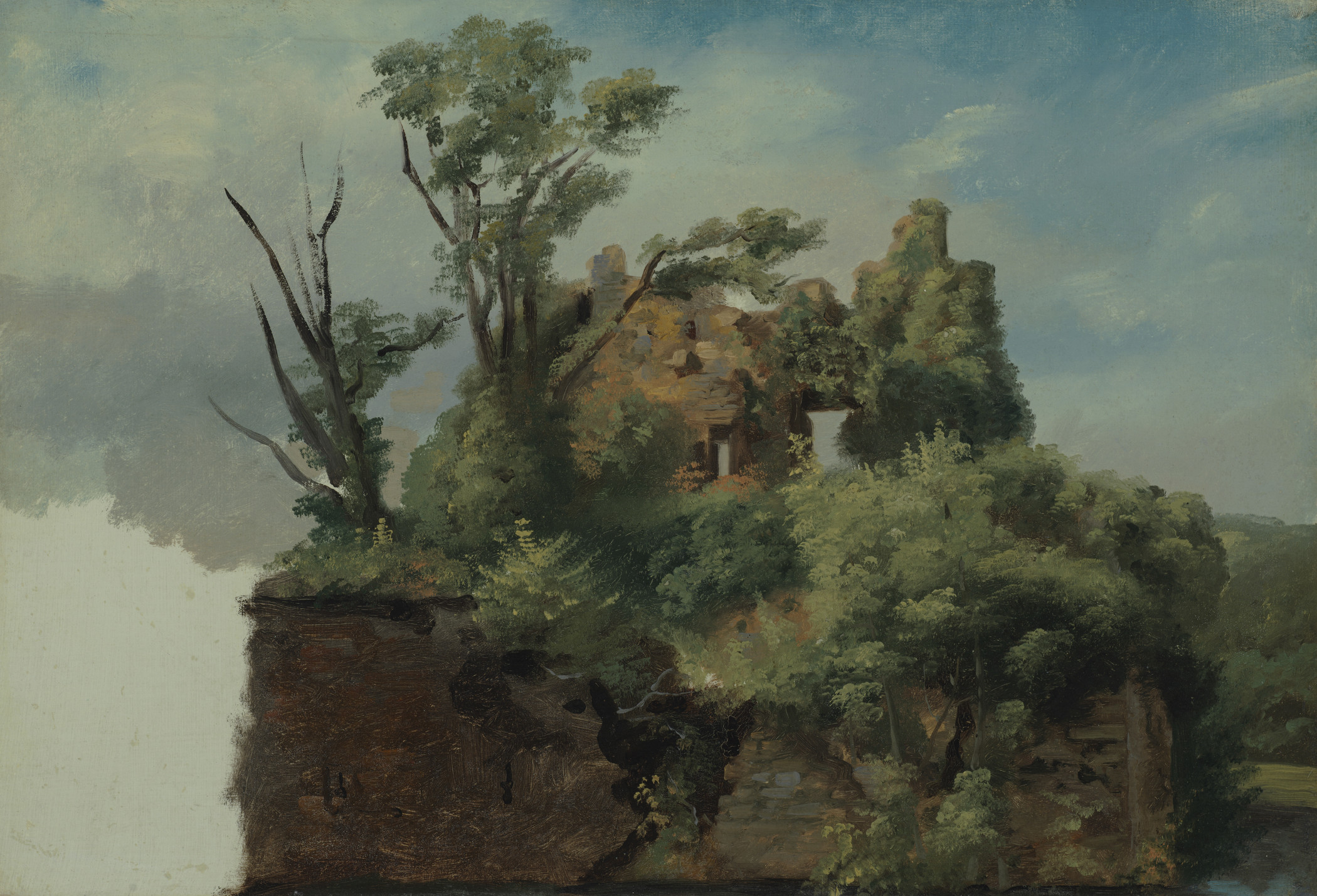
Valenciennes’s 650-odd-page book, in addition to providing instruction in perspectival drawing, argued for landscape painting as a practice of high humanism involving the artist’s full command of classical literature. Having meditated on ancient poetry, landscape painters of talent, “on closing their eyes, could see ideal Nature, that Nature adorned with the riches of the imagination,” enabling them to paint great works of genius. In addition to classical education, Valenciennes advocated painting outdoors, “where the pure air and the spectacle of Nature at once simple and noble elevate the mind and produce delicious sensations.”2
Valenciennes’s treatise was part of his lifelong campaign to raise the status of landscape painting and establish the genre within the official hierarchy. A critic’s response to the group of paintings at the Salon of 1789, of which the Getty painting was one, suggests the distance the lowly genre would have to travel to become an accepted form of ambitious painting and hints at Valenciennes’s role in the journey: “The historical effect is almost nil in these paintings, where the figures are practically lost; but the landscape is movingly composed, and shows a great intelligence of planes and of light.”3 Valenciennes exhibited regularly at the Salon and was a highly influential teacher; he was elected professor of perspective at the École impériale des beaux-arts in 1812. He was decorated with the Legion d’honneur in 1815 and achieved his mission in 1816 with the creation of a Prix de Rome for paysage historique.
Whereas Valenciennes was recognized in his day as the leading landscape painter in France, his posthumous reputation suffered from what critics considered an overly dogmatic allegiance to his seventeenth-century Neoclassical masters, Poussin and Claude. However, the donation to the Louvre in 1930 of a large cache of plein-air studies done during the artist’s early years in the Italian campagna brought to attention his extraordinary powers of observation and sensitivity to the visual effects of nature. The Louvre sketches evidenced what Lionello Venturi described as the “delicacy of touch, candour, and grace which are his art.”4 The painter’s subtle contrast of light and shadow and his synthetic view of nature bring to mind Jean-Baptiste-Camille Corot’s early Roman-period works. Indeed, Valenciennes’s landscape aesthetic, composed of both a Neoclassical sense of harmony and integrity and of the immediacy and freshness of plein-air study, passed through his students Achille Etna Michallon (1796–1822) and Jean-Victor Bertin (1767–1842) to their student Corot (1796–1875). Through both Élémens and the emphasis in his teaching on the crucial role of oil sketches, Valenciennes established a tradition of open-air painting that continued to influence landscape painting through the nineteenth century. As late as 1883, Camille Pissarro (1831–1903) recommended Élémens to his son Lucien “as still the best and most practical” treatise on painting.5
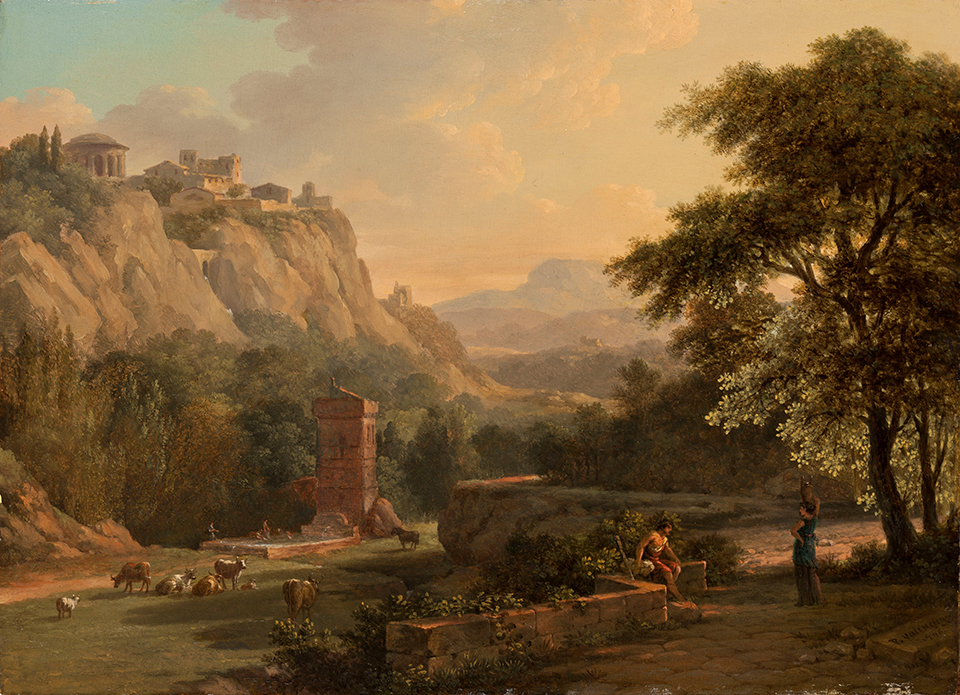
Until 2004 the painting belonged to the French Bro de Comère family, who owned another painting by Valenciennes, Paysage à l’antique, avec figures sur un chemin longeant une rivière dominée par une ville (fig. 4), of the exact dimensions of Classical Landscape, signed and dated 1796. Presumably, the family acquired the Getty picture sometime between its exhibition at the Paris Salon in 1789 and 1796, when they commissioned the artist to paint a pendant of similar subject matter. The most notable member of the Bro de Comère family was Louis Bro, born in Paris in 1781, who served Napoleon in several campaigns, most famously in a celebrated battle at Waterloo in 1814. Under the Restoration, he was retired, then called back to service under Louis-Philippe I, serving France until his death in 1844. General Bro married Marie-Louise-Joséphine-Anne de Comère (alternately listed as “Commère”), joining his name to hers. General Bro was the neighbor, landlord, and close friend of Théodore Géricault (1791–1824) in Paris and commissioned the great Romantic artist to paint portraits of his wife and son.
- Mary G. Morton
-
Jean-François Heim, Claire Béraud, and Philippe Heim, Les salons de peinture de la Révolution française: 1789–1799 (Paris: C.A.C. Sarl. Édition, 1989), p. 361. (Listed with other works exhibited by Valenciennes at Salon of 1789.) ↩︎
-
For more on Valenciennes’s treatise, see Paula Rea Radisich, “Eighteenth Century Landscape Theory and Pierre Henri de Valenciennes” (PhD thesis, University of California, Los Angeles, 1977). ↩︎
-
“Variétés: Exposition des peintures, sculptures et gravures de MM. de l’Académie Royale, au Salon du Louvre (25 Août au 8 Octobre 1789),” Mercure de France 43 (October 24, 1789), p. 86. Reprinted in Mercure de France 137 (1974), p. 458. ↩︎
-
Lionello Venturi, “Pierre Henri de Valenciennes,” Art Quarterly 4, no. 2 (Spring 1941), p. 94. ↩︎
-
Venturi 1941 (note 4), p. 109. ↩︎
